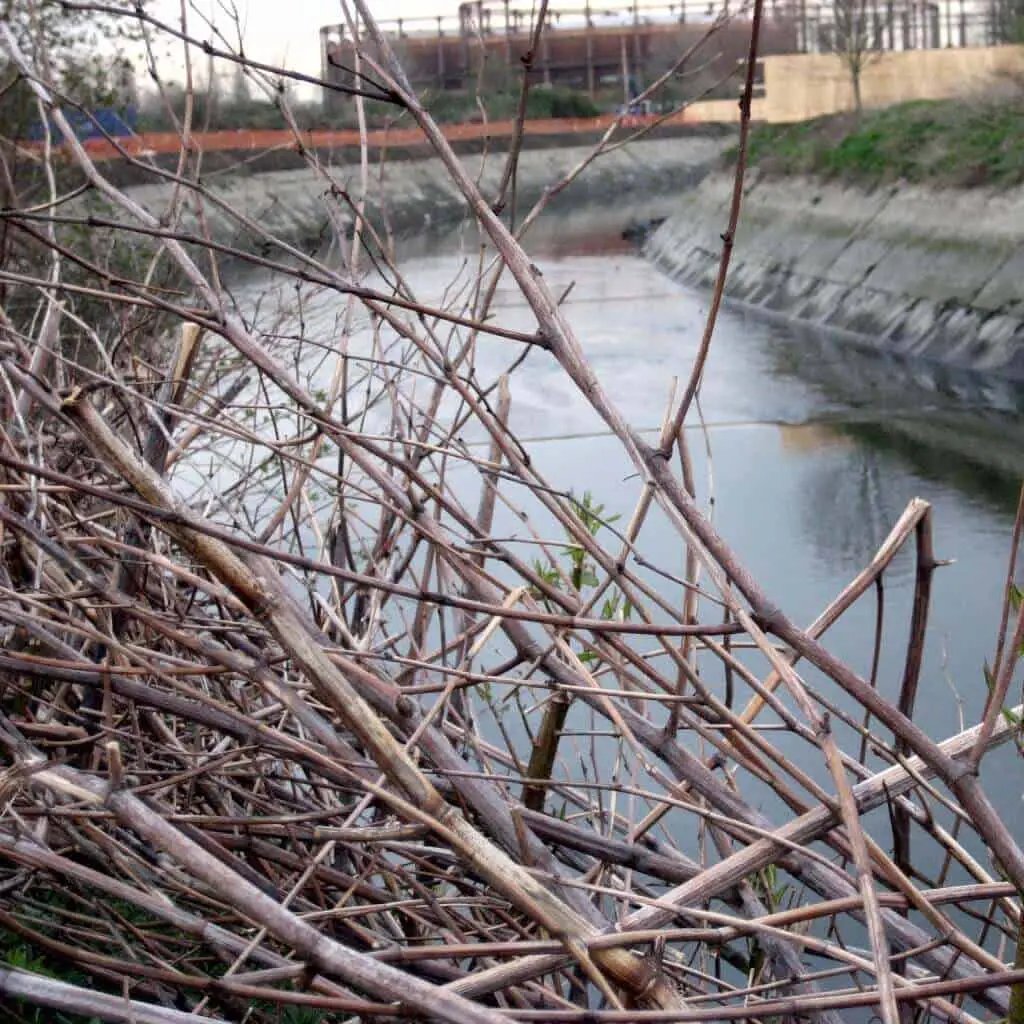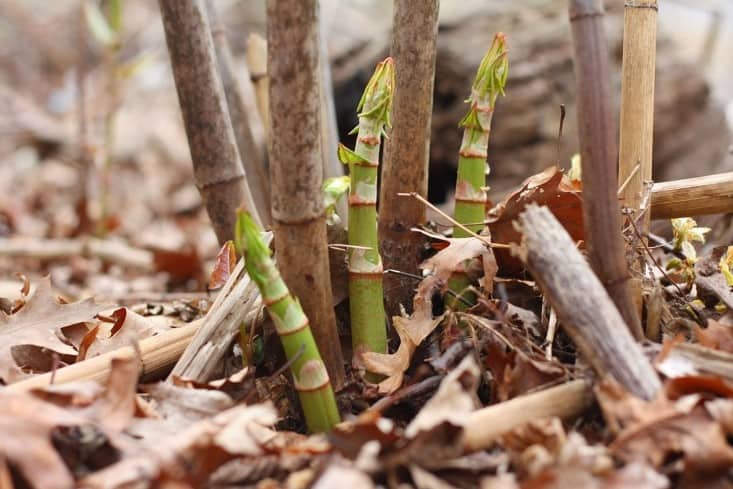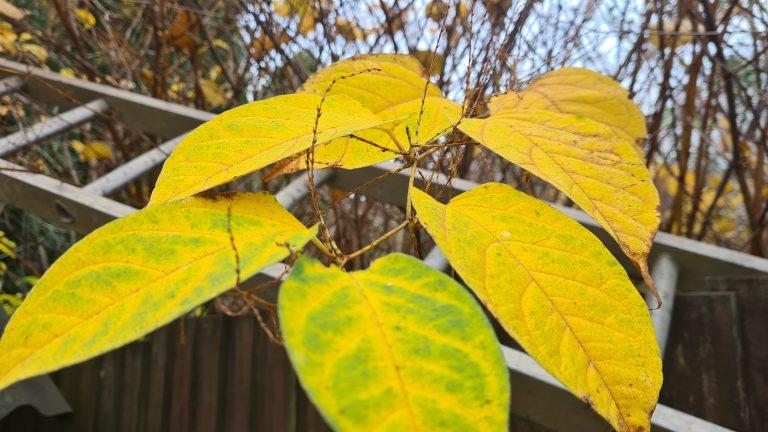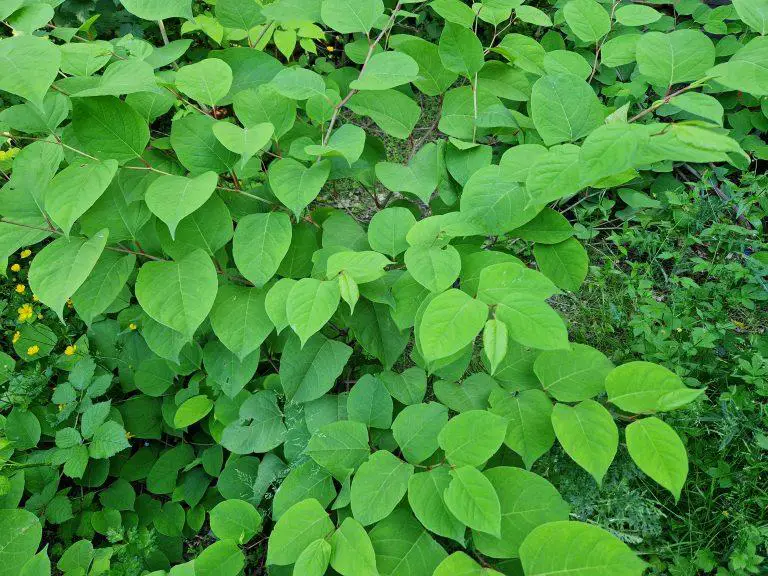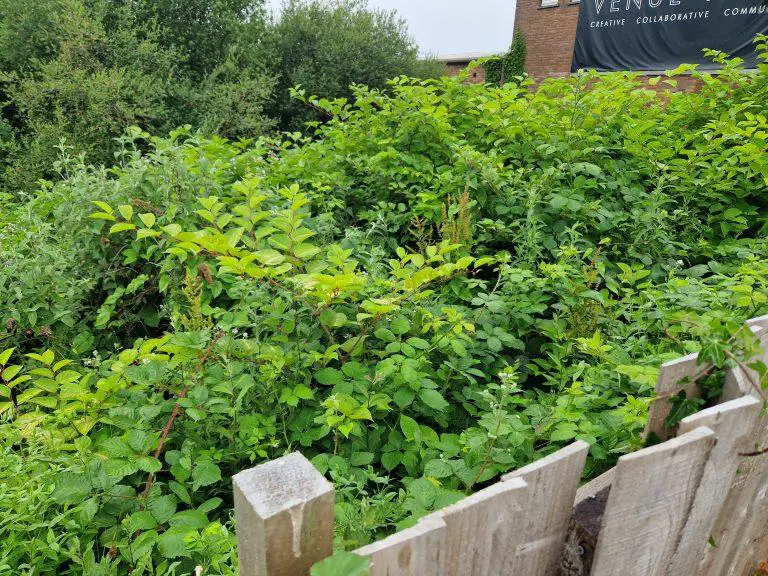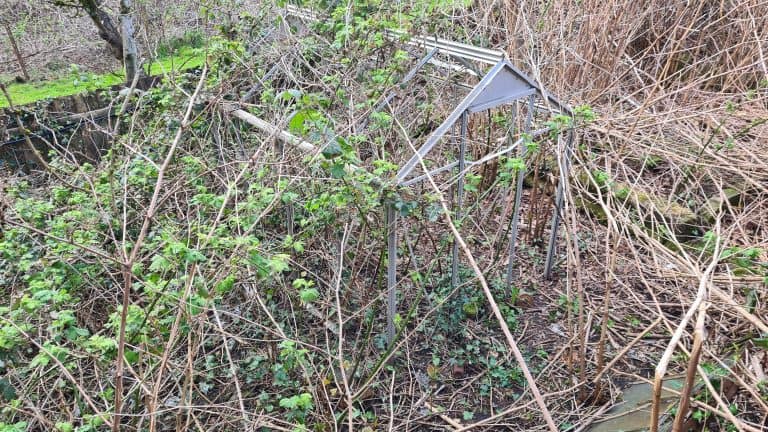For people who have Japanese knotweed on their property, winter seems like a relief because the weed stops growing and appears to be dead altogether. Japanese knotweed is a perennial plant; this means that it starts to grow in spring and matures fully during summer.
It is vital to know how to identify Japanese knotweed in winter to plan for its removal as soon as possible.
The knotweed’s characteristics differ depending on the season of the year. So, what does Japanese knotweed look like in winter?
Japanese knotweed in winter
Japanese knotweed identification in winter is quite more challenging than it is in summer and spring. The weed has distinct characteristics in the winter. During this time, the leaves of Japanese knotweed turn from green to brown and fall.
Towards the end of autumn and the beginning of winter, the Japanese knotweed stem dies off and becomes dormant. The roots remain fresh and are brown on the outside and orange on the inside.
The stems may remain standing throughout winter and can also be seen growing among new plants in spring.
It is vital to note that the Japanese knotweed can continue to grow in winter if the weather remains mild and the infestation is adequately sheltered.
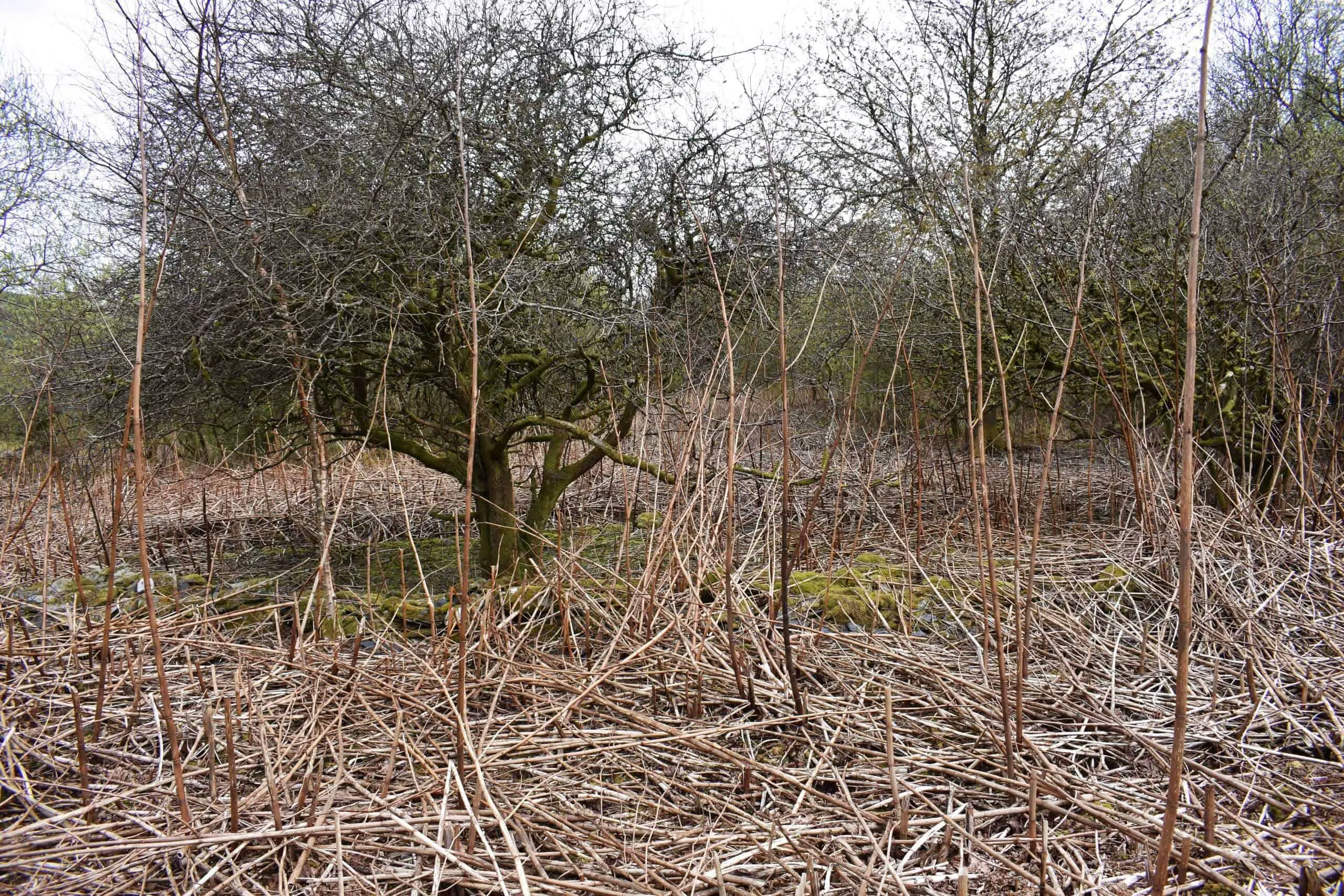
The negative impact of Japanese knotweed
Since its arrival in the mid-18th century, the Japanese knotweed has done more harm than good. Here are some negative impacts of this weed:
1. Damage to infrastructure and property
This weed can grow through house cracks, concrete, foundations, and bricks, thus putting your property at risk of permanent damage.
Though the weed may appear to die in winter, the plant’s rhizome remains healthy and fresh under the soil for the rest of the winter. During the first few weeks of spring, the weed begins to grow its first shoots and quickly spreads to uncontaminated areas.
2. Encroachment
It is not illegal to have Japanese knotweed growing on your land but you may face the law for letting the plant grow into the neighbouring property without intervening. Your neighbour may take action against you, which may result in hefty fines.
3. Uncontrollable growth
The weed grows up to 4 inches a day, making it one of the fastest-growing plants in the UK. Its ability to spread so fast leads to ecosystem disturbances. Some ornamental plants will be overthrown from existence within a short time.
4. Lower prices on properties
Japanese knotweed on your land discourages potential buyers. On top of that, you may have to sell your property at lower prices than deserving.
When is the best time to spot Japanese knotweed?
Mid-summer and early autumn is the best time to identify the Japanese knotweed. During spring, there will be reddish or purplish shoots appearing from the ground. The plants proliferate during this time forming dense foliage.
During mid-summer, the creamy-white flowers emerge in long clusters. The plant spreads mainly through its root system, the rhizomes. The rhizomes cover several meters outwards from the visible above-the-ground stems.
Japanese knotweed removal during winter
Many individuals assume that Japanese knotweed problems will go away with winter. Unfortunately, this is not the case; this Japanese knotweed in winter can grow fast during other seasons. Winter presents a perfect time for knotweed eradication.
There is almost nothing in the garden during the winter months. This allows for some farm preparation or even cleaning. It is easier to treat weeds because of the absence of above-ground vegetation. The brittle stem may be easy to dig up or cut for disposal.
Herbicides can only be used to treat the knotweed during summer or spring when the plant becomes dormant. This means that the only effective Japanese knotweed removal method during winter is excavation.
Hiring a knotweed specialist will ensure that there are no rhizome fragments left in the soil and that the soil is returned to the same area without widespread disruption to the land or property.
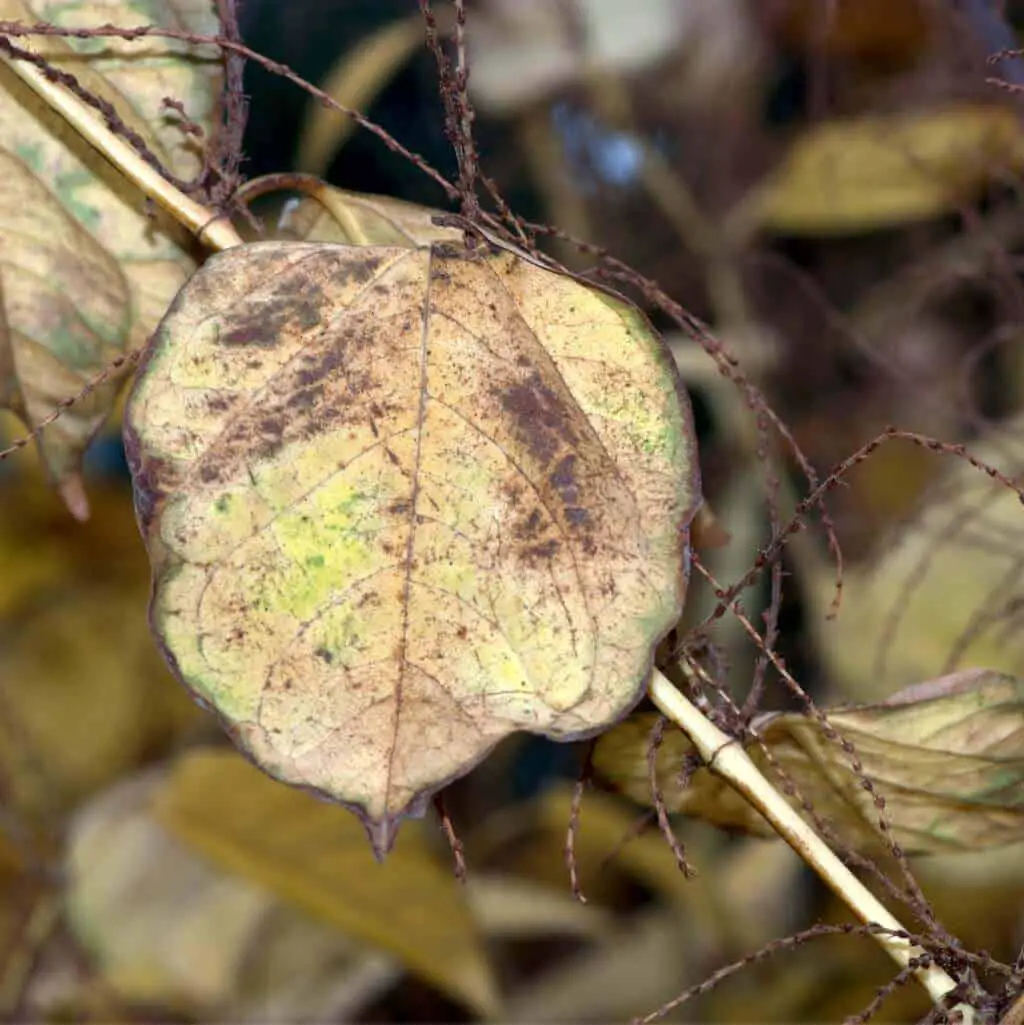
What do I do if I think I have Japanese knotweed?
If you think you have Japanese knotweed on the property, avoid cutting it or digging it up. The plant can cause significant damage to your property and that of your neighbour. You may need a knotweed specialist to help you identify the knotweed accurately.
Remember, several plants are mistaken for Japanese knotweed.
A word of caution!
Japanese knotweed in winter can be deceiving; the plant dies entirely and becomes dormant. Unfortunately, home sellers may be using this fact to their advantage. During this time, it is easier for property sellers to cover up the knotweed; most unsuspecting buyers often fall into this trap.
For the above reasons, it is evident that people looking to buy the property during this time are at a higher risk of having Japanese knotweed on their properties in the future.
Therefore, it is essential to know how to identify the plant to avoid becoming a victim by chance. You may hire a surveyor to help you inspect this weed in case you are looking into buying a property.
Want to know more about Japanese knotweed in winter?
Knotweed Removal aims to provide the most up-to-date information, help and advice for YOU to make informed decisions. If you are unsure or uncertain about how to proceed, please reach out to us and we will gladly come back and advise you as best we can.
Governmental advice can be found here and the UK law covering the removal of Japanese Knotweed as stated under the Wildlife and Countryside Act 1981 can be found here.
the best means to contact us is via our email – hello@knotweedremoval.tips
Do not forget we have a library of blogs covering many areas relevant to Japanese Knotweed, our free downloadable How-to Guides and Product Reviews on the latest methods being employed to eradicate or remove Japanese Knotweed.
Knotweed Removal, UK

